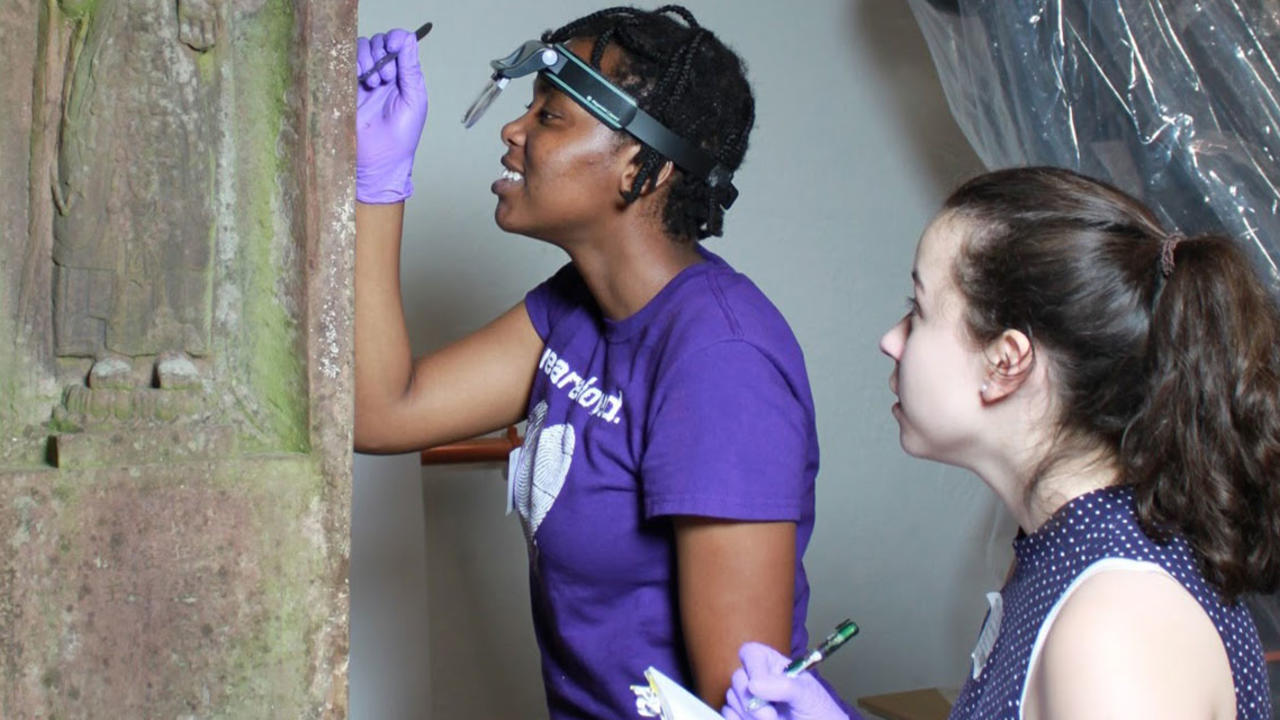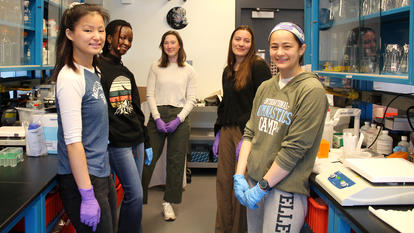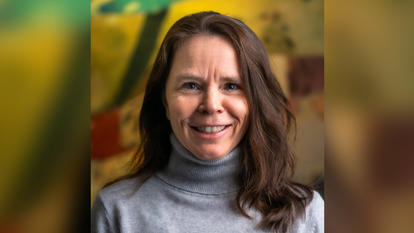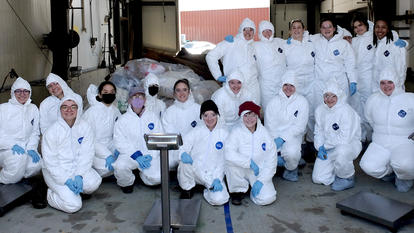Wellesley Students Help Conserve Ancient Buddhist Statue at the Museum of Fine Arts, Boston

Wellesley students Lisa Luka ’18 and Carly Sprague ’19 visited the Museum of Fine Arts, Boston twice this summer to collect bacteria, lichens, mosses, and fungi growing on the surface of an ancient Buddhist sculpture, called a stele (pronounced stee-lee).
Into the stone is carved an image of the Bodhisattva Guanyin as well as names of the numerous Buddhist monks, nuns, and laypeople who donated funds for the creation of the stele during the Northern Qi Dynasty in 576 A.D. It is not currently on view at the museum due to ongoing conservation treatment.
The students worked with patient diligence, aware that they were playing a significant role in understanding the deterioration processes at work in a treasured work of art. “This has been an excellent hands-on opportunity in that we’re learning about art conservation and microbiology,” said Luka, who came to Wellesley from Zimbabwe to study cell biology. “This is so real world.”
Sprague, a biochemistry and biology major from Seattle, added, “Being allowed to do this is a cool and exciting experience. This is an ancient sculpture, and these microbiological systems are complex and require study. This is a challenge, and we’re up to it.”
The two students work in the research labs of Vanja Klepac-Ceraj and John Goss, both assistant professors of biological sciences at Wellesley.
The focus of the students’ and professors’ research has been the mosses, lichen, fungi, and photosynthesizing bacteria that populate the stele’s surface, causing erosion and disfiguring its features.
At first glance, a sculpture wearing a patch of colorful lichen or moss may look elegantly weathered, but appearances can be deceiving. Some species of organisms bore their way into the sculpture, threatening its integrity. Others secrete various organic acids, and once they find a home, they stay.
Photosynthetic bacteria, one species of the predominant organisms on the sculpture, are able to thrive because they can convert carbon dioxide from the air and sunlight into a food and energy source such as sugar, explained Goss. Fungi, he said, “develop a mutually beneficial relationship with the bacteria.”
Klepac-Ceraj described these colonies as symbiotic communities. “They persevere in their environments, and they grow as they coexist and continue to thrive. These are rich, diverse, and complex communities of microorganisms,” she said.
Characterizing the role of specific microorganisms, and learning how they cause deterioration and how they will behave in an indoor environment after cleaning processes are all critical to the long-term preservation of this remarkable work of art. Understanding the close links between microbiology and the art world has inspired Luka and Sprague to want to learn more about both.
Once the samples are obtained, they have to be identified using DNA sequencing and visual microscopy. While awaiting sequencing results where likely hundreds of different microbes will be identified, Goss said 15 different types of fungi and bacteria have been grown in culture and identified so far.
The project posed several challenges for the MFA, which is why they sought help at Wellesley. “We had a number of questions whose answers lay outside our field of expertise,” said Pamela Hatchfield, the Robert P. and Carol T. Henderson Head of Objects Conservation at the MFA. “We were particularly interested in understanding the extent of damage caused by the extensive biological growth we see on the surface as a result of years of outdoor exposure, and how this biological growth might affect the stability of the stone in the future.”
After the different species of microbiological growth have been catalogued, the museum will administer a laser treatment to reduce the potential for further damage to the stone, said Hatchfield.



